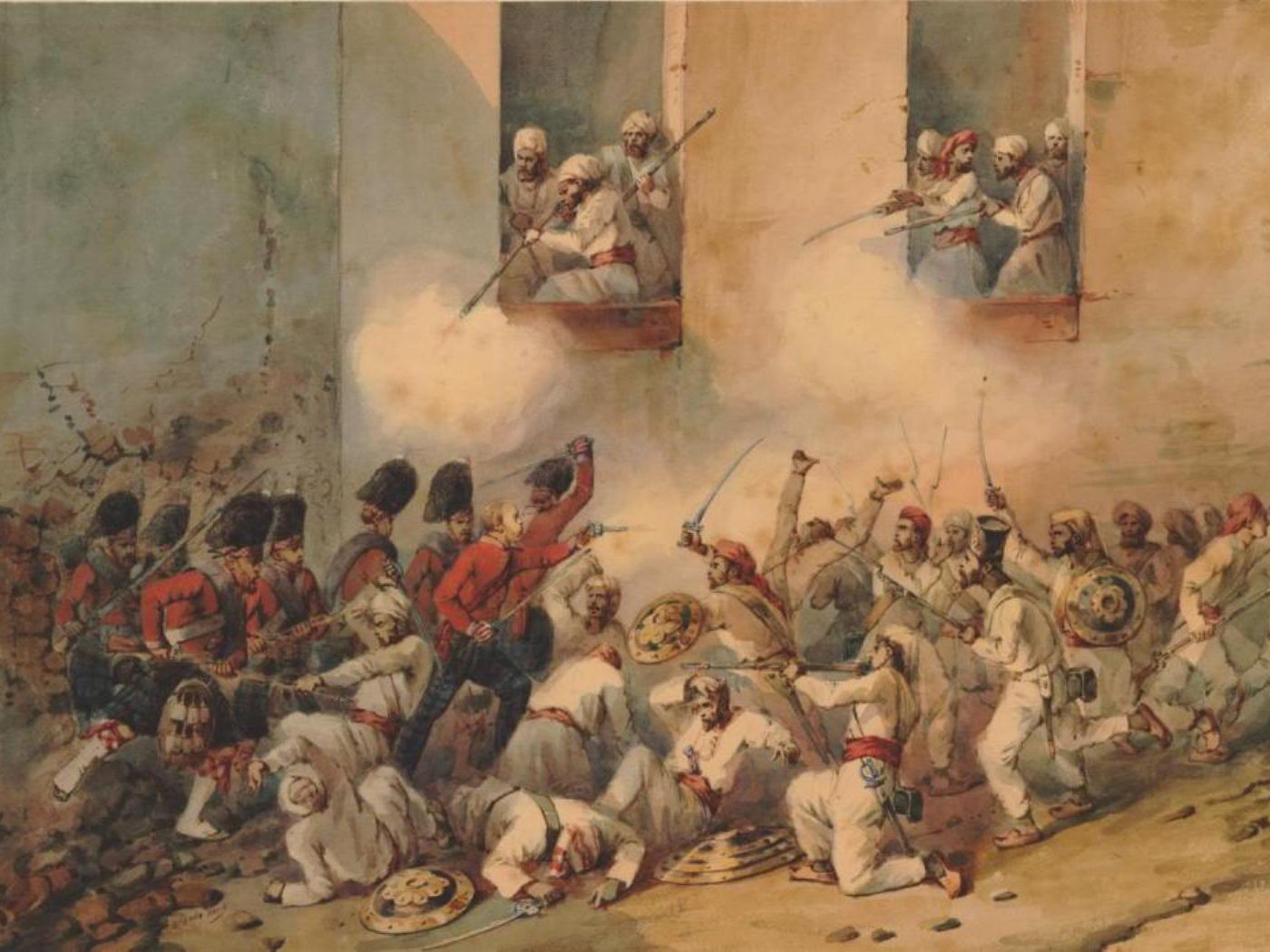Julian Jones reviews J.G. Farrell’s The Siege of Krishnapur (1973), the second outing in a loosely connected trilogy of novels set among the breakdown of British colonial rule.

This historical novel tells the story of a British outpost in colonial India in the weeks leading up to the Indian Mutiny of 1857, resulting in a rebellion in the fictional settlement of Krishnapur, during which the native sepoys (Indian soldiers employed by the British East India Company) lay siege to the British colonialists for a number of weeks.
While historically the Indian Mutiny was unsuccessful and was quashed by British forces, this rebellion represented a very stark realisation that British rule was not set in stone. Like never before, the Mutiny also made evident that British imperial rule in India would have to be backed up with increasingly repressive force, as was grimly evidenced in the aftermath of the rebellion, during which it is estimated 100,000 innocent civilians were murdered. Places such as Lucknow, which served as the basis for this novel, had been under siege for nearly three months before a first successful rescue attempt, and experienced many of the worst atrocities carried out by British forces in retaliation. Crucially, the Mutiny proved that the British East India Company which controlled present-day India, Pakistan and Bangladesh, was too fragile to rule without direct administration by the colonial powerhouse, and the colonialist mission was effectively nationalised and transferred to the Crown.
Farrell’s novel is a powerful account which delves into the ways in which the structure and ‘civilisation’ that justified British colonialism can quickly start to break down in the face of hardship. The balance of power is upturned during the novel, as the once imperious British colonialists sink into degradation due to the material conditions they begin to suffer during the siege. The besieged lose the thin veneer of respectability, order and Anglican ethic which had been used to justify imperial dominion over the ‘disorderly’ and ‘heathen’ natives. The British are driven to eat insects, burn books, sacrifice their possessions and fall into extreme superstition – the irony being that these are many of the traits which had earlier been viewed as belonging to the natives in the earlier chapters of the novel.
The pomposity with which the characters continue to behave, even in the face of cholera, war and hunger, is as startling as it is believable thanks to Farrell’s vivid portraits, with each character representing an archetypal personage of Victorian England: the wealthy industrialist, the priest, the fallen woman, the colonial administrator and more are all present here. Some of the more remarkable characters include the Collector (administrator) of the outpost, who has a fixation with the Great Exhibition, an event which was meant to show Western civilisation at its most developed but is being remembered in the midst of hunger and depravity. Also noteworthy is the romantic Fleury, who demonstrates an extreme sentimentalism and love for poetry while the cannons are firing around him, or the Padre or priest, whose deranged religious rants in the face of imminent danger are completely irrelevant to the unfolding situation.
Tellingly for the present times, this novel is also a great example of so-called ‘pandemic literature’, and even includes a caricature of a doctor (Dunstaple) peddling the quackery and false medicine which prevailed in the Victoria era, just as it does now with COVID-19. Plus ca change and all that…
Perhaps the most interesting character however is the world-weary Magistrate, a rationalist who questions British rule in India and who previously collaborated with the proto-socialist Chartist movement during his youth. During a key scene the Magistrate lamentably abandons his instincts to share equally the seized foodstuffs of deceased relatives with the remaining survivors, and instead presides over a sham auction where biscuits are sold to the highest bidder at hugely inflated prices which nobody can afford. Even the Magistrate, it seems, is engulfed by the depravity of British imperialism.
The downfall of the British Empire in India proved to be almost a century away from the time of the Mutiny, but the rumblings of discontent were in evidence throughout colonial rule. If further proof were needed of the warped morals, economics and religious-cultural values which underpinned the East India Company’s system of control, this book is it.




